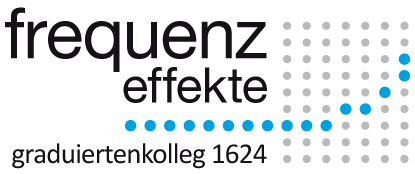| Abstract | There are a number of German strong verbs which exhibit a stem vowel change from the infinitive -e- to -i- in the forms of the second and third person singular in the present tense and the imperative singular. This dissertation project is designed to investigate the replacement of the i-stem imperative singular by an imperative form with an e-stem, e.g. sterben ‘to die’: stirb! > sterb(e)!; geben ‘to give’: gib! > geb(e)!
It is hypothesised that this replacement is an instance of analogical levelling towards regular verb conjugation without stem vowel change. Along the lines of former usage-based analyses of language change, type and token frequencies of verbs are considered to be an important factor in explaining why some verbs change earlier and faster than others and which direction the change takes. Among others, type and token frequency variables include
- token frequencies of the verb lemmas potentially affected by the change (i.e. the strong verbs with vowel gradation),
- token frequencies of the verb stems potentially affected by the change (e.g. (auf)geben ‘to give (up)’),
- the type frequency of verb conjugation paradigms,
- intraparadigmatic frequencies of i- and e-stem and the imperative singular (how many different forms exist in the paradigm?, how often do they occur?, is the imperative singular “overrepresented” in some verbs?).
For the purpose of answering these questions, a web-based corpus has been compiled, containing natural language material amounting to 7m tokens. Mixed-effects regression models have been fitted to the data in order to i) evaluate the explanatory potential of the selected frequency (and other) measures with regard to the form of the imperatives in question, and ii) attest the present stage of the development. i) It has been found that the strongest predictors for the stem vowel in the imperative singular of the strong verbs with vowel gradation are verb stem token frequency and recency. Thus, lower frequency verbs succumb to analogical levelling, while high frequency verbs resist replacement; it does not matter in this regard whether the verb is a simplex (geben), prefixed (vergeben) or particle verb (aufgeben). “Recency” is to be understood as the previous occurrence of an imperative singular form. Once an analogical imperative singular form has been used, the probability increases that the following imperative singular variant is likewise formed in analogy to the regular verb paradigm, e.g. gebe followed by nehme. ii) The phenomenon under investigation must be referred to as a “change-in-progress” or “ongoing change”: an increase in the use of the analogical imperative variants was indentified in the corpus study (time span: 2001-2013); nevertheless, the replacement of the established i-stem imperative forms is far from complete. In a separate corpus study, type frequency is once again shown to be one of the key components of the productivity of verb conjugation paradigms and, hence, explains the direction of the analogical change.
Converging evidence from experimental testing complements the survey in order to make qualified statements about the awareness of native speakers of the change under investigation. In a “self-paced reading with recall” design, response latencies and recall accuracies have been collected for the two imperative stems presented in verb stems of different token frequency. The analysis of data from two age groups of subjects from different regions in Germany reveals interesting surprisal patterns, interpreted as evidence for frequency effects on the entrenchment of forms.
|


